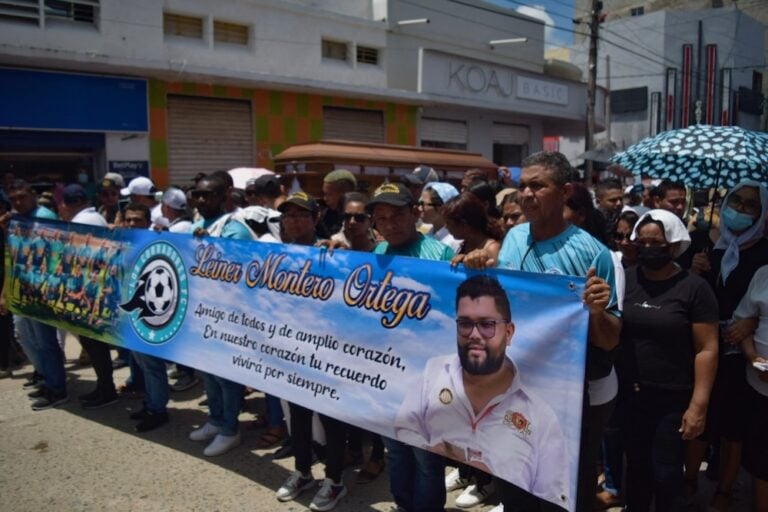Roméo Langlois, a correspondent for the France 24 television station and the newspaper Le Figaro, was accompanying an army and police operation against FARC coca laboratories as part of his work on a documentary on drug trafficking when he went missing.
UPDATE:
Reviving hopes, FARC rebels say they will free French journalist (RSF, 27 May 2012)
(FLIP/IFEX) – 30 April 2012 – The Fundación para la Libertad de Prensa (FLIP) is concerned about the well being of French journalist Roméo Langlois, who disappeared after getting caught up in a confrontation between the Colombian army and FARC guerrillas in the forests in Caquetá department.
FLIP is also concerned about the handling of information on this case. Any speculation or unconfirmed information about the facts and whereabouts of the journalist could put him in more risk. The organisation hopes that good news about Langlois will soon be available.
On 28 April, Langlois, a correspondent for the France 24 television station and the newspaper Le Figaro, was accompanying an army and police operation against FARC coca laboratories as part of his work on a documentary on drug trafficking in Colombia. During the operation, the group was ambushed by the FARC Frente 15 and Langlois was caught in the crossfire.
On 29 April, the Minister of Defense, Juan Carlos Pinzón, stated that the journalist had been wearing a bulletproof vest and a helmet during the confrontation, but had been injured in the arm. He explained that Langlois had reportedly decided to take off the vest and helmet so he could pretend to be a civilian and get away from the area where the guerrillas were shooting.
Alain Juppé, the French Minister of Foreign Relations, originally said that the journalist had been kidnapped by guerrillas, but later said he was not completely sure that Langlois had been abducted.
The Colombian authorities said they do not know where the journalist is and thus far the FARC has not made any statements about the incident.
Simone Bruno, a journalist who was working on the documentary with Langlois, but who was not present during the confrontation, traveled to Caquetá with a group of international journalists to try to find out what happened. “There are many rumours about the situation, but they are only rumours,” said Bruno.
At this time the only thing that is certain is that Langlois is missing and that the state of his health and wellbeing are unknown.
Langlois is very experienced in covering conflicts in Colombia and has reported on the topic many times.
Journalism and conflict
Historically, Caquetá is one of the country’s departments that has been most impacted by armed conflict. For the FARC it is a strategic territory for the cultivation and production of coca. The military Brigada XII and two other brigades are stationed in the department.
The work of journalists is fundamental for understanding the conflict in Colombia. The situation of Langlois demonstrates, once again, the difficult conditions and dangers that journalists face when covering subjects related to armed conflict.
MORE INFORMATION:
Fate of missing French journalist unclear, caution urged (RSF, 30 April 2012)
French journalist suspected kidnapped in Colombia (CPJ, 30 April 2012)
Colombian rebels reportedly confirm capture of French correspondent (IPI, 2 May 2012)
FARC urged to keep promise and release captive French reporter (RSF, 3 May 2012)
CPJ calls on FARC to release French journalist (CPJ, 1 May 2012)


